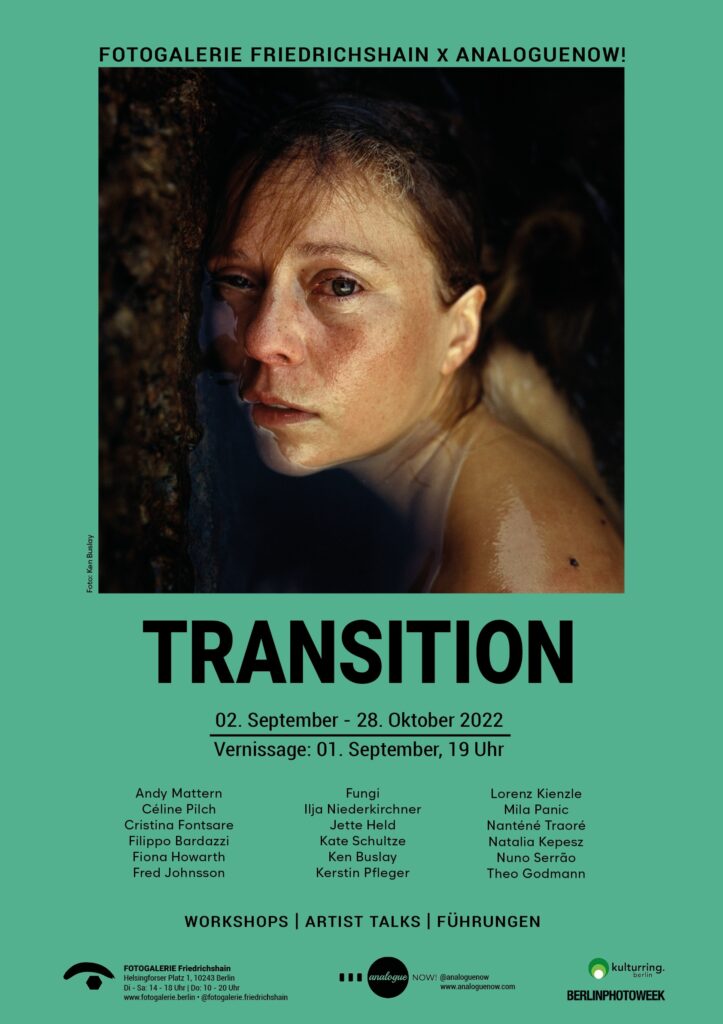
TRANSITION
Fotogalerie Friedrichshain and analogueNOW! are pleased to announce their first curatorial collaboration.
The exhibition will showcase analog photography projects focused on narrating change, capturing development or decline, and witnessing or challenging the turn of events.
Either individual or collective, social or environmental, gradual or brutal, unexpected or chosen, a transition can be defined as a process of change, from a beforeness to an afterwards.
If the notion of transition is inherent in all forms of life, our present days seem to be characterized by an acceleration of history, so that some transitions once only observable with the distance of time now seem to be perceptible on the scale of a human’s lifetime. This exhibition is intended as a moment of deceleration, a breath necessary to think about recent and ongoing transitions.
2 septembre – 28 octobre 2022
Fotogalerie Friedrichshain
Helsingforser Platz 1, 10243 Berlin
With works by
Andy Mattern • Céline Pilch • Cristina Fontsare • Filippo Bardazzi • Fiona Howarth • Fred Johnsson • Fungi • Ilja Niederkirchner • Jette Held • Kate Schultze • Ken Buslay • Kerstin Pfleger • Lorenz Kienzle • Mila Panic • Nanténé Traoré • Natalia Kepesz • Nuno Serrão • Theo Godmann
Co-curated with Clara Stein, Thomas Ming-Hui Stanka, Urizen Freaza
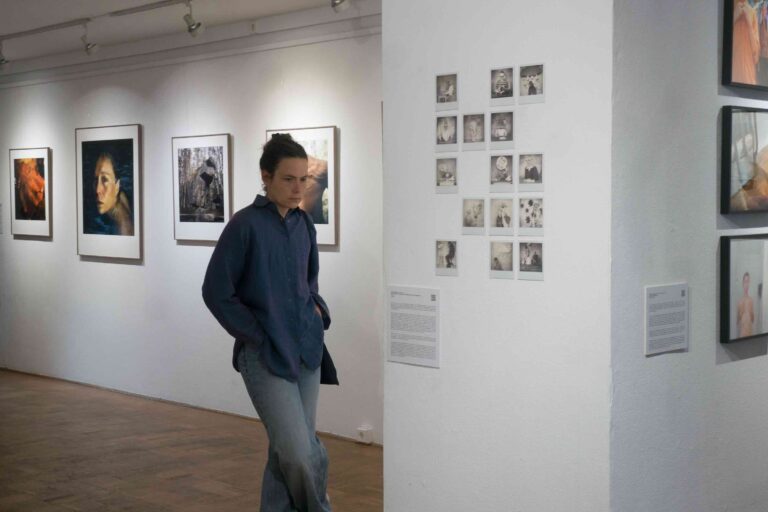

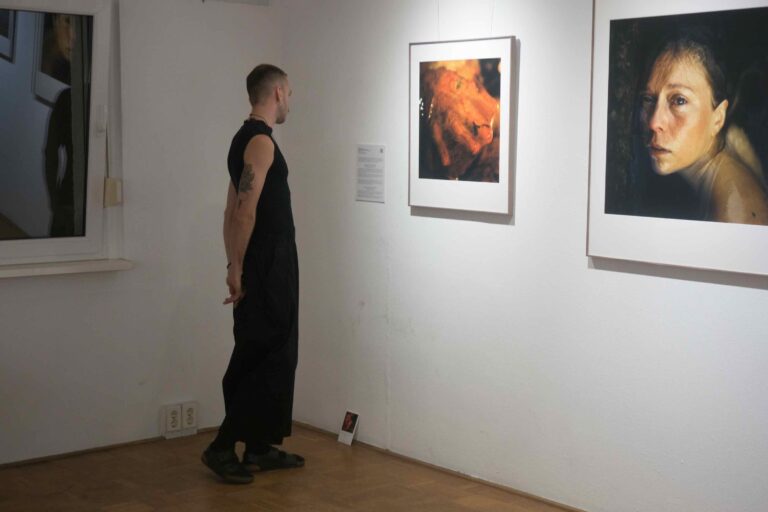
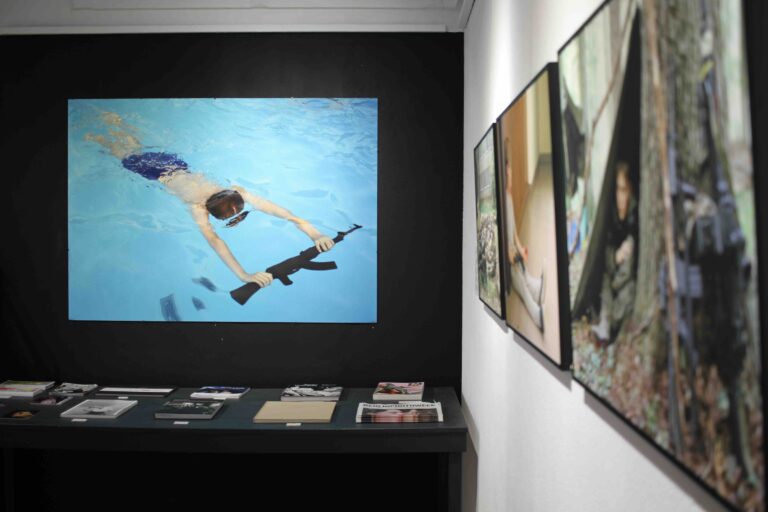
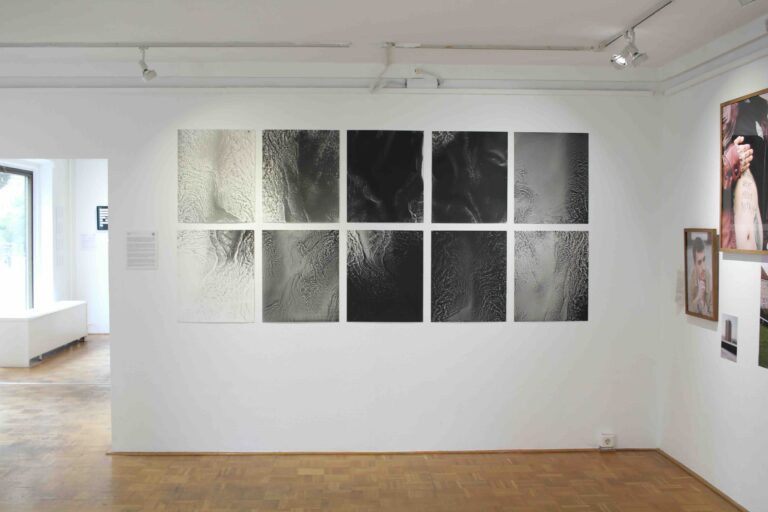
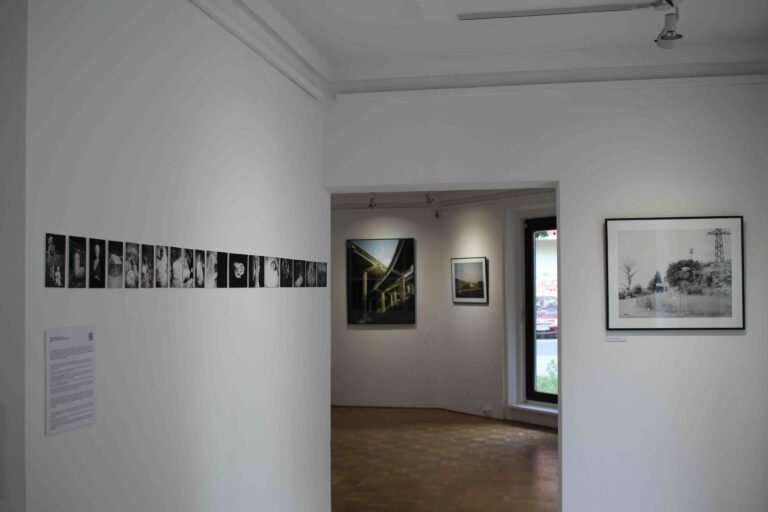
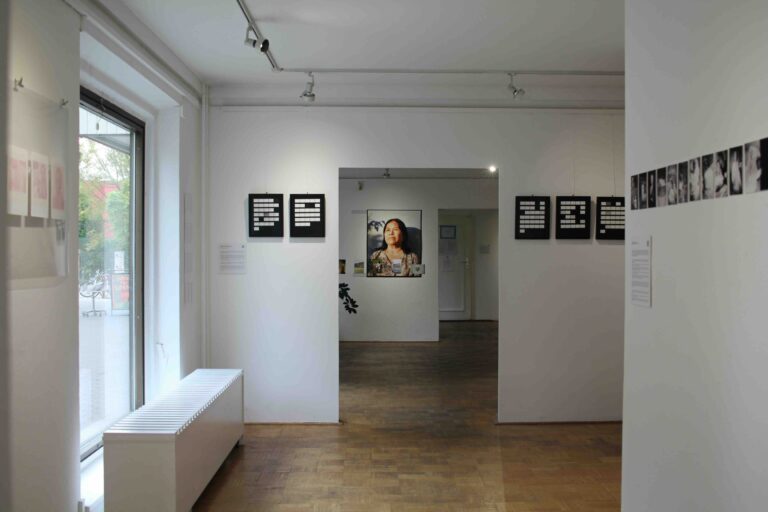
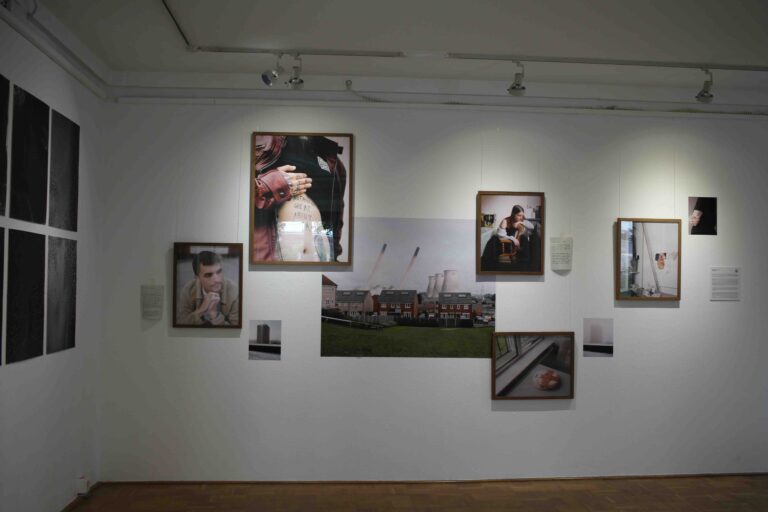
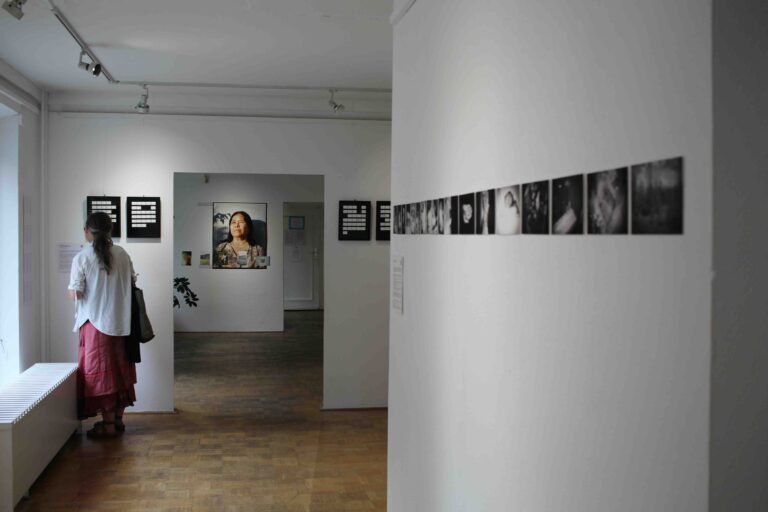
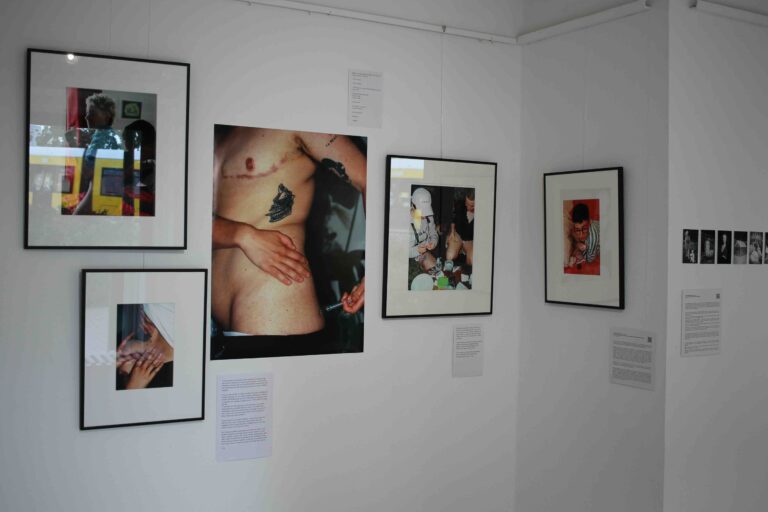


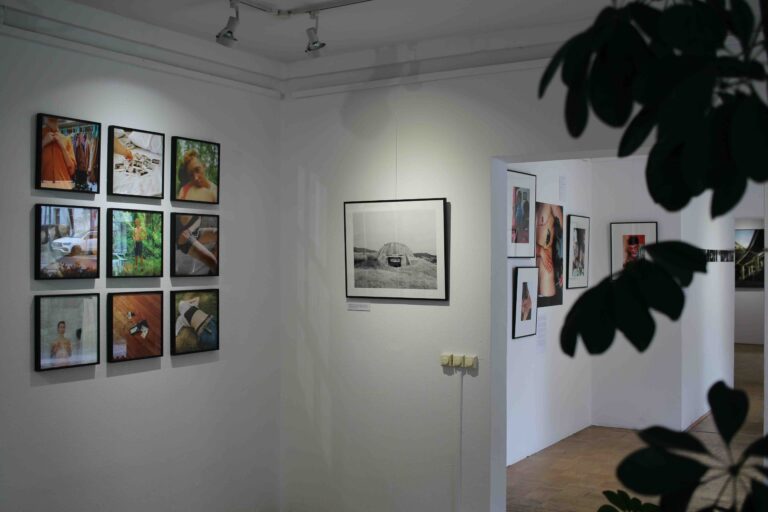
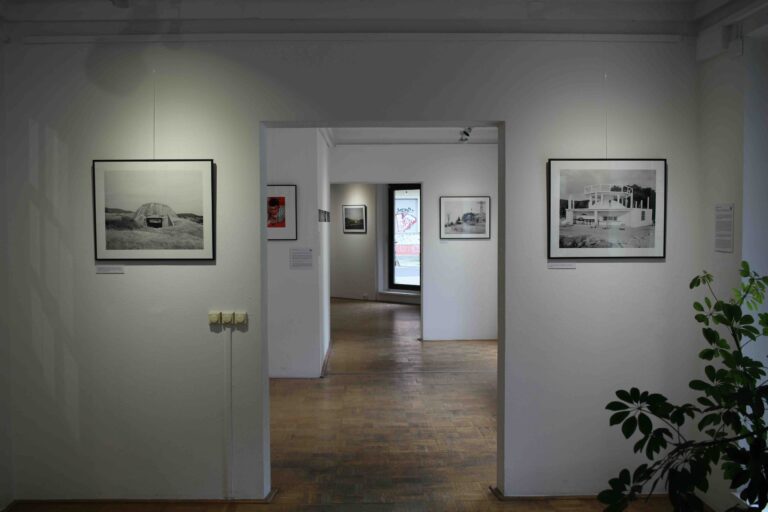
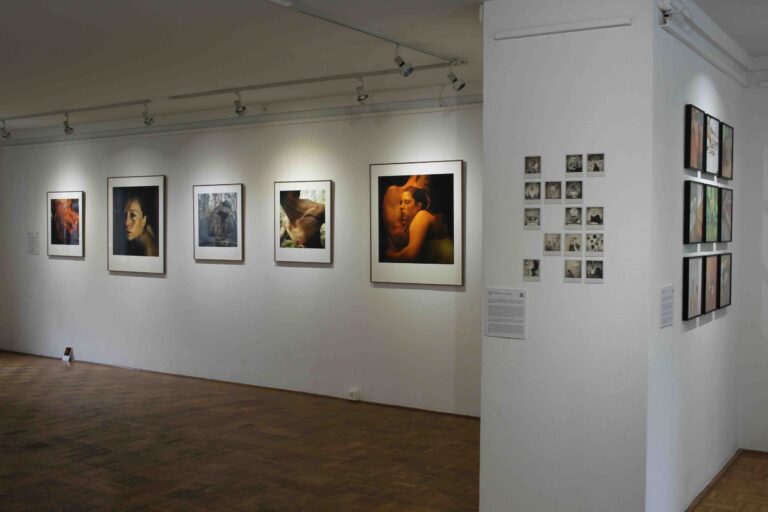

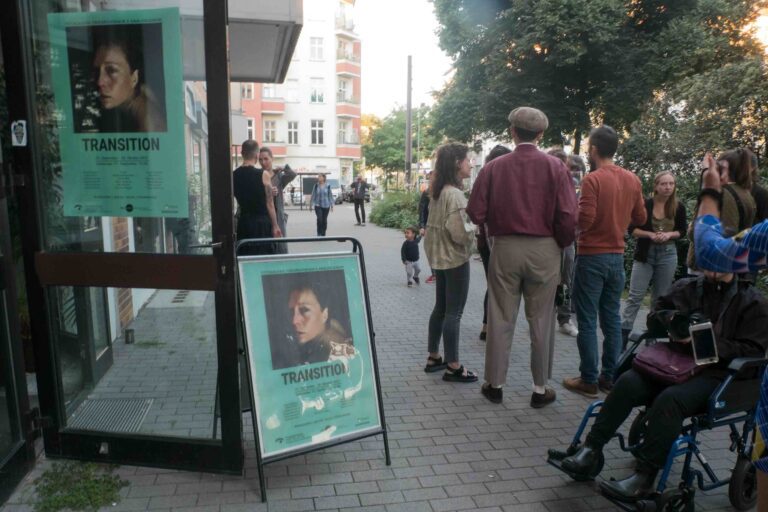
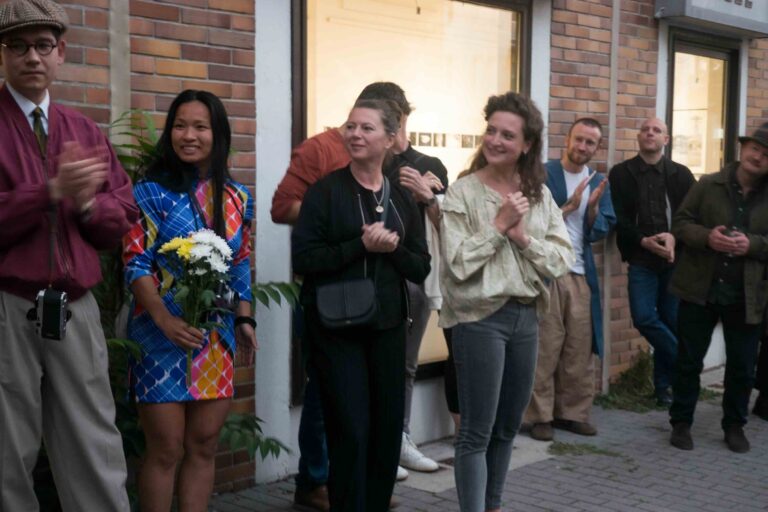
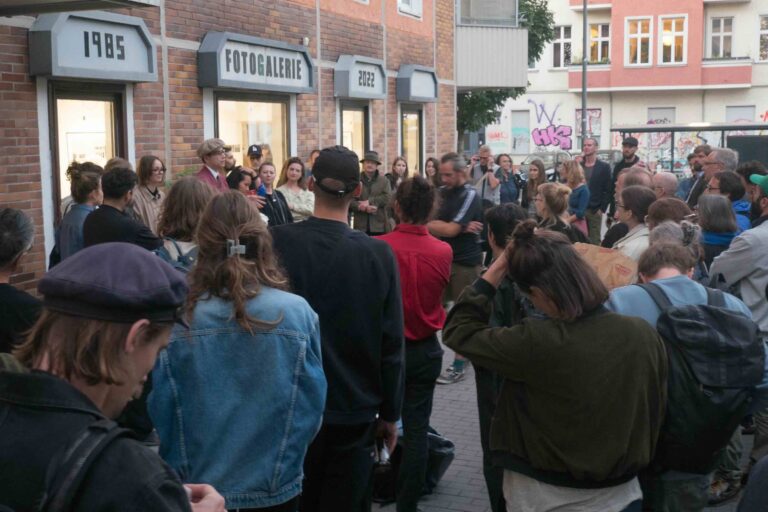

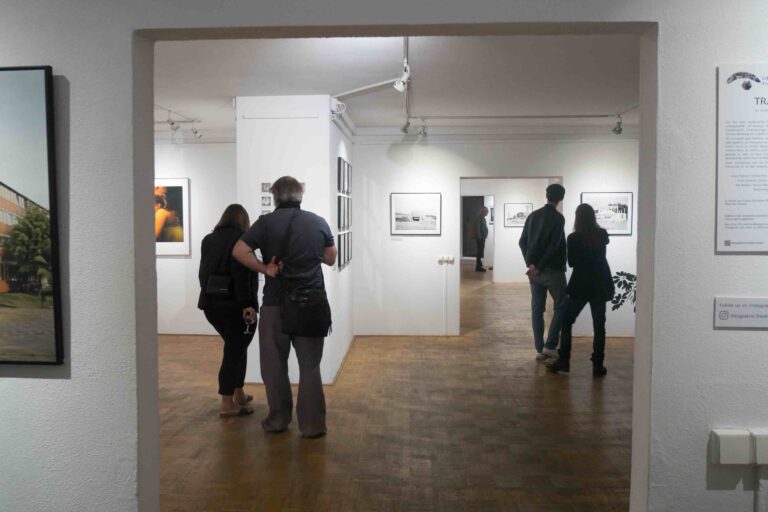
Photos du vernissage : © Lisa Martini – Vues d’exposition : © Claire Ducresson-Boët
artistes
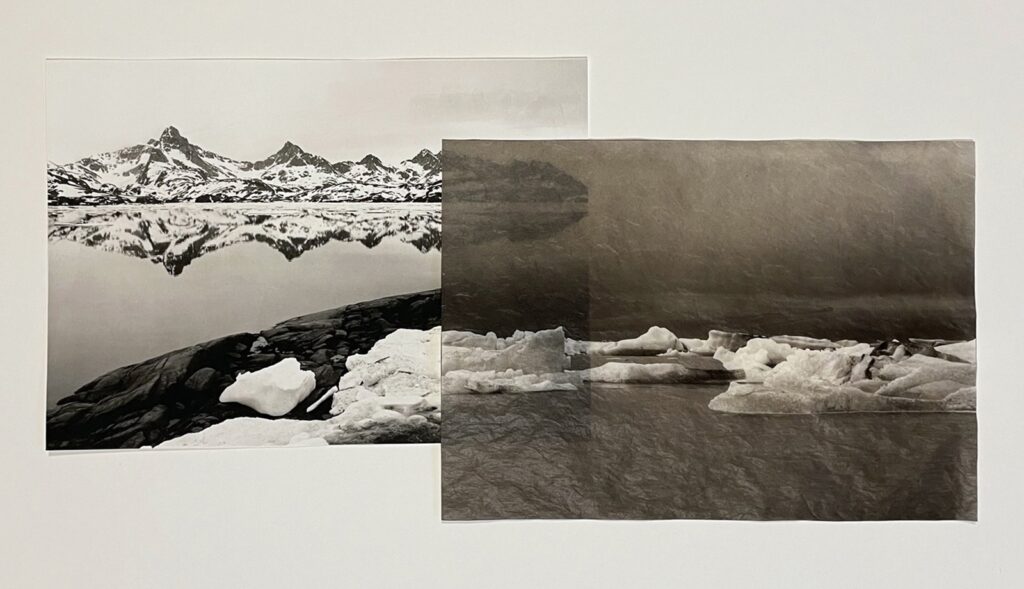
Fiona Howarth
Layers is an ongoing project started in 2022 in which Canadian photographer Fiona Howarth juxtaposes both physical and sensitive layers, thus opening up a third, mystical space, and the possibilities for a new narrative. Her diptychs, printed on delicate but resilient handmade Japanese Gampi paper and Platinum Rag paper, seem to merge into a new landscape in which the viewer is invited to dive and wander, questioning what is and what was, where reality starts and ends – transitioning from one world to the other.
« There were layers of solitude, layers of meaning, and layers of secrets obscured; the paper listened to the secrets so there was a little less weight. The imperfections of my memories and my fleeting dreams confused me. Were these just feelings from my past or was this reality? »
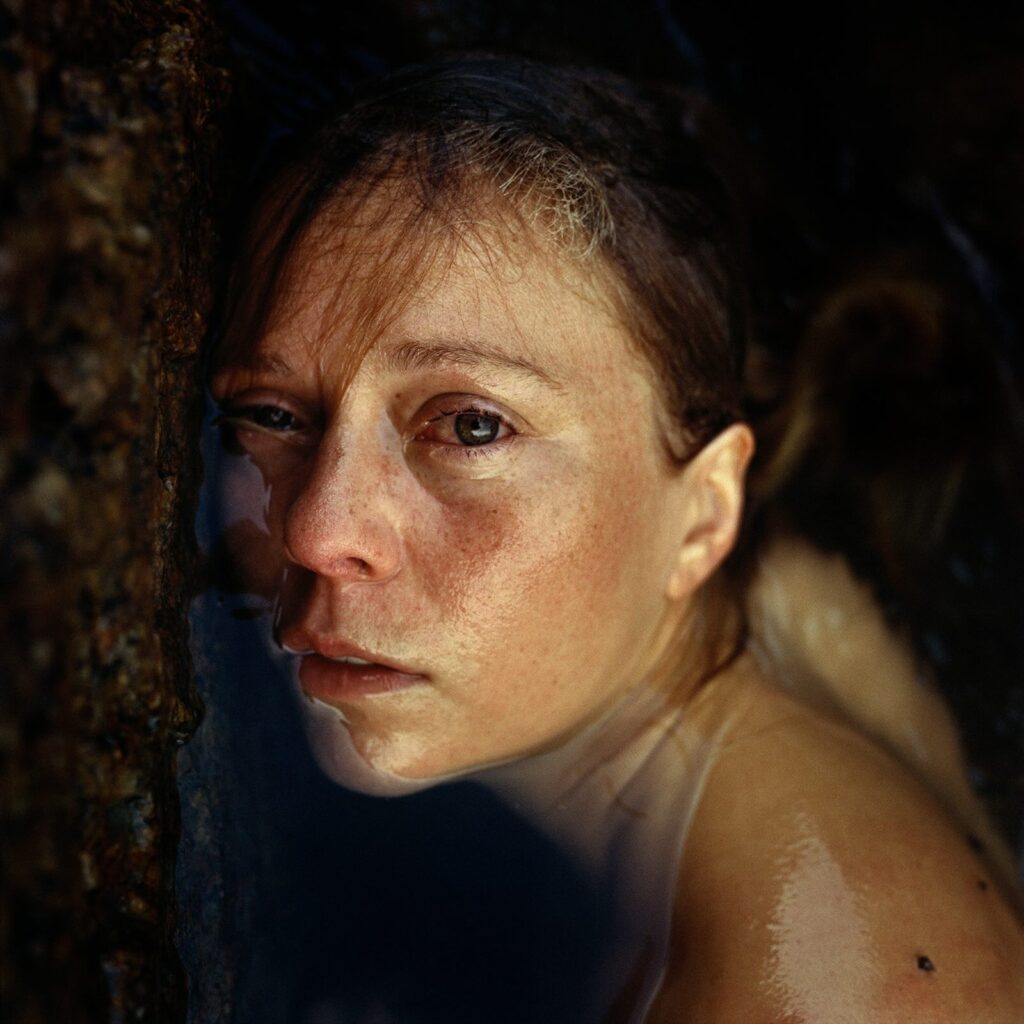
Ken Buslay
Shot on medium format film between 2018 and 2022, Without a Mother One Cannot Die has first been exhibited as Ken Buslay’s graduation project from the Ostkreuzschule in 2022. The series tells the story of life, its rise and decay in different forms, with a focus on our human experience. It gives us to see and feel what it means to be alive in its purest way, showing and magnifying what we, as humans, are used to hiding. Looking at the photographs it is almost as if we could feel the textures of skin and fur, hear the breath, sighs and screams of the persons photographed. It reads as an attempt to reconnect with the nature that we have distanced ourselves from, each picture carrying something from the universal. Buslay depicts the cycle of life both at a micro and macro scale, where opposites coexist, always returning to where we came from.
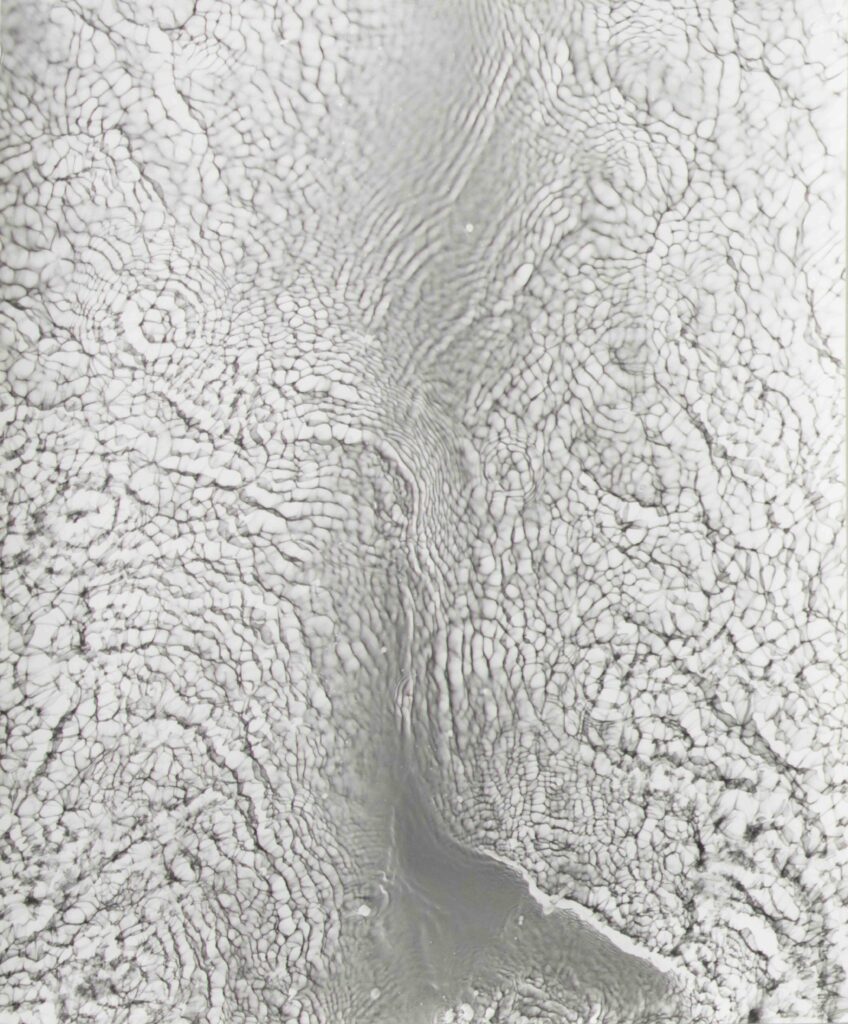
Jette Held
Jette Held, based in Tanne/Harz, Germany, uses photography as a tool to explore her close environment, and to reflect on nature and its evolution through climate change. In her series Kuhtränke II [Cow Waterer II] (2020-2021) Held depicts nature at a 1:1 scale. She produces photograms from natural elements, capturing and fixing the traces they would leave. The entire process happens fully in nature. She researches thoroughly the places that she takes her images from, wandering there on a daily basis, exploring and taking in from her surroundings. She exposes the photograms with a flashlight directly onto baryta paper at night in summer, in the water of the natural cow waterer at her home. She develops the images immediately afterwards, in the forest through a classical black and white hand print procedure. The final result of fifteen paper sheets of 60 cm x 50 cm next to one another reminds of an amphibian’s skin, leaning towards abstraction and highlighting the delicacy and fragility of the nature that surrounds us.

Nuno Serrão
All Islands are Mountains is an ongoing project started in 2020 by Portuguese photographer Nuno Serrão. All pictures have been taken on Madeira Island, where Serrão was born. They depict deserted landscapes being at times overtaken by an imposing brutalist architecture, translating a form of melancholy through its aesthetic simplicity. The cinematic compositions, deprived of human life, show places of passage and transition, where time seems to stand still for a relieving moment of quietness before a choreography of movements resumes. Through these pictures Serrão asks the question: « We are leaving faster, traveling faster, arriving faster, and along the way, we have no time to understand what we are slowly losing. If all trips are made of comfortable shortcuts, what will happen to the question posed out of discomfort? »
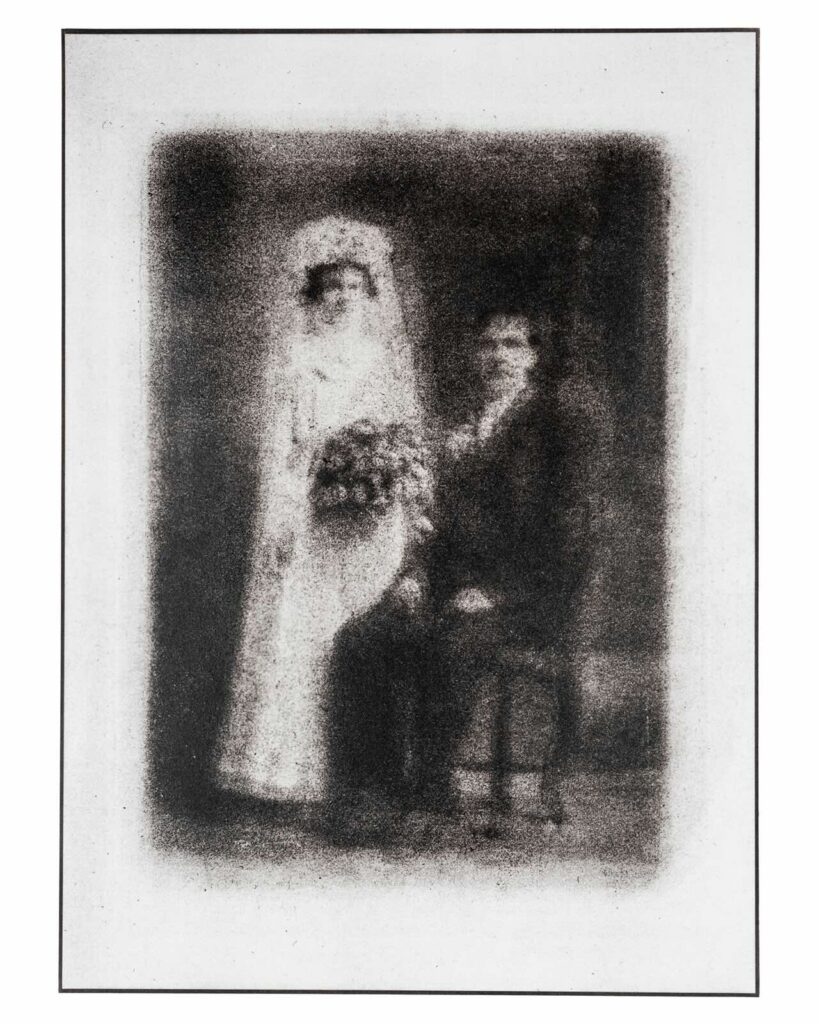
Andy Mattern
Working in the « expanded field of photogaphy » as he calls it, American artist Andy Mattern has been developing over the past decade a corpus of works that demonstrates his interest for media and communication technologies, their history and their materiality, with a focus on photography itself in his most recent projects. The ongoing series Ghost explores a little-known quality of platinum photography, a process otherwise known to be the most permanent: if left in contact with certain paper stocks, the platinum of the print will catalyze the cellulose in the adjacent paper, leaving behind a new image. Andy Mattern preserved those found « ghosts » by photographing them and producing modern platinum prints from them. Investigating the visual and material qualities of the source images, this project also opens up a reflection on the mnemonic role of photography, the temporality of the family album and the persistence of photographic images.
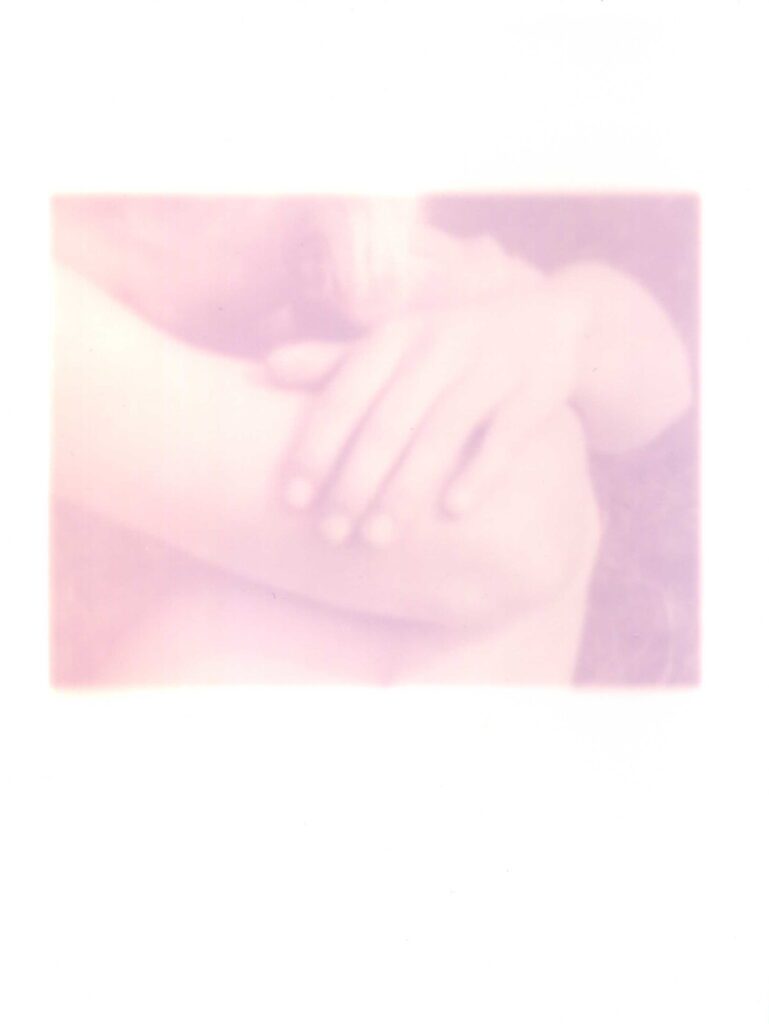
Céline Pilch
« When my mother died, I was the same age as she was when she was pregnant with me. I was her only daughter, it was just the two of us. » With the project Die Hände meiner Mutter [My Mother’s Hands] (2022), Berlin-based artist Céline Pilch addresses a delicate love letter to her mother, tracing back what is left of their tight relationship through old photographic material she uses to preserve that connection. After saving digital copies of found analogue photographs on her tablet, Pilch exposed photo paper to her device’s screen for thirty minutes, transferring by contact the image from her tablet to the paper, that she then fixed. Starting with her mother’s pregnancy, the series ends with a recent self-portrait of the artist herself. All reproduced with that same technique, the recovered photos gathered from different sources seem now to belong to one single dimension: Pilch creates a safe space where connection and loss meet, where nothing is ever ending, and where mother and daughter can still stand next to each other.
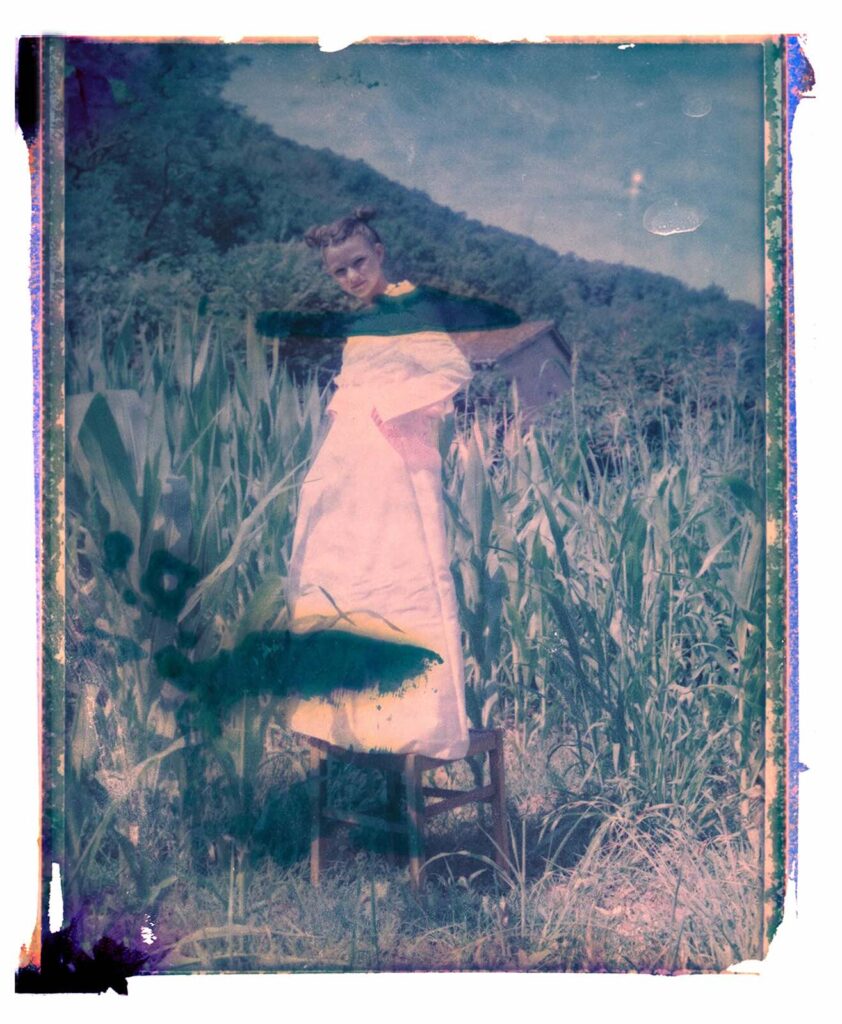
Cristina Fontsare
Started in 2016, A crack in the mirror is an ongoing project through which Barcelona-based photographer Cristina Fontsare documents the different stages of life from childhood to adolescence to young adulthood, through portraits of a group of young people the artist photographs every year. Specialized in long-term photo projects, Fontsare creates visual stories based on universal themes such as the cycles of life, growth, metamorphosis and the magic of the everyday. Built as a diary, A crack in the mirror highlights the imaginary world of childhood invisible to the adult gaze, the beauty and fragility of puberty, the contradictions, lights and shadows of growth, and everything we leave behind when growing up. The peel apart instant film used by Fontsare, gives to the project a dreamy, ethereal touch and invites the viewer to recollect memories of their own childhood and adolescence.
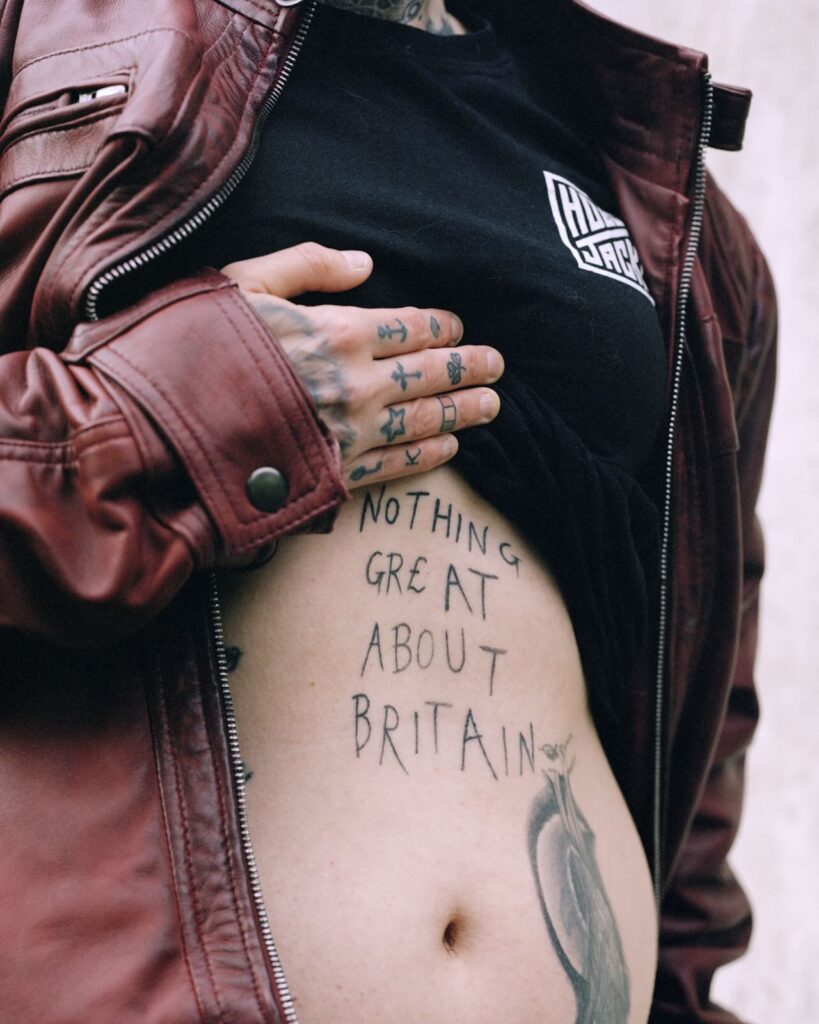
Kate Schultze
Living between Germany and the UK, photographer Kate Schultze was quite shocked to learn that many of her friends had voted to leave Europe, without any solid rationale behind their decision. Prompted by this realization, Mind the gap, luv. (2018–ongoing) is an investigation of post-referendum UK, through the eyes of young adults from areas that are economically more vulnerable. Focused on Yorkshire and the West Midlands, and their surrounding areas, where the Brexit vote was strongest, this project combines portrait, landscape and still life photography, as well as letters written by the individuals Schultze met and portrayed. Driven by the photographer’s interest in European areas that have experienced social and economic depression as well as an alienation of the former working class, Mind the gap, luv. investigates whether there is a connection between the culture of « Britishness » and the drive for independence from the EU, and whether this exists within Schultze’s circle of friends and family.
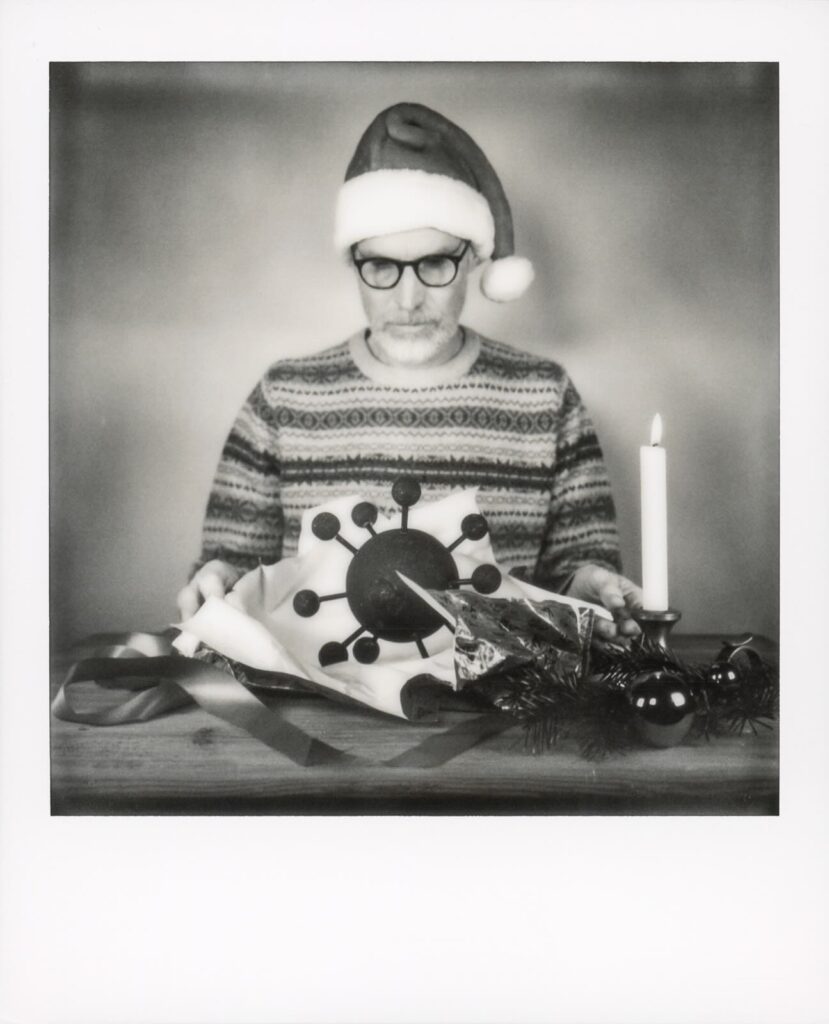
Fred Johnsson
A self-taught analogue and digital photographer based in Hamburg, Fred Johnsson has built over the years a work characterized by poetry and a sense of humor and the absurd staged in compositions that tickle the dividing line between reality and fiction. In the ongoing series Groteske Selbstporträts [Grotesque Self-portraits], Johnsson creates whimsical, poetic and ironical self-portraits staged with handmade props and backgrounds. The craftsmanship of these tableaux evokes the works of German photographer Martin Pudenz and French film director Michel Gondry, who both inspired the project. The selection exhibited in Transition tackles the struggles society is currently confronted with, such as the impending climate catastrophe, the Covid pandemic, or the negative effects of the digital revolution. Fear, uncertainty, anger become real characters in these scenes; but in this self-created world, the artist becomes the leading figure, able to eventually face the transitions that our times require. Johnsson finds in his artistic practice a shelter to cope with the need to adapt to alarming incoming times.

Filippo Bardazzi
Photographer and journalist, with a university degree in Philosophy, Italian photographer Filippo Bardazzi cultivates an interest in all changes involving past and present, questions of memory, and the interaction between humans and their environment. These themes are all brought together in the series Bunkers (2018–ongoing). The black and white photographs shot with a Linhof large format camera, show some of the countless bunkers that cover the Albanian landscape, all built between the 1960s and 1980s under the communist dictatorship of Enver Hoxha. These bunkers, which ultimately have never been used for military purposes, bear witness to the paranoia of the totalitarian regime. Straddling topographical and typographical work, the project recalls the heritage enterprise of Bernd and Hilla Becher. Remnants of recent Albanian history and sorts of military memento mori, the state of decay of these bunkers or their refurbishment for new purposes also symbolize the advent of democracy in Albania.
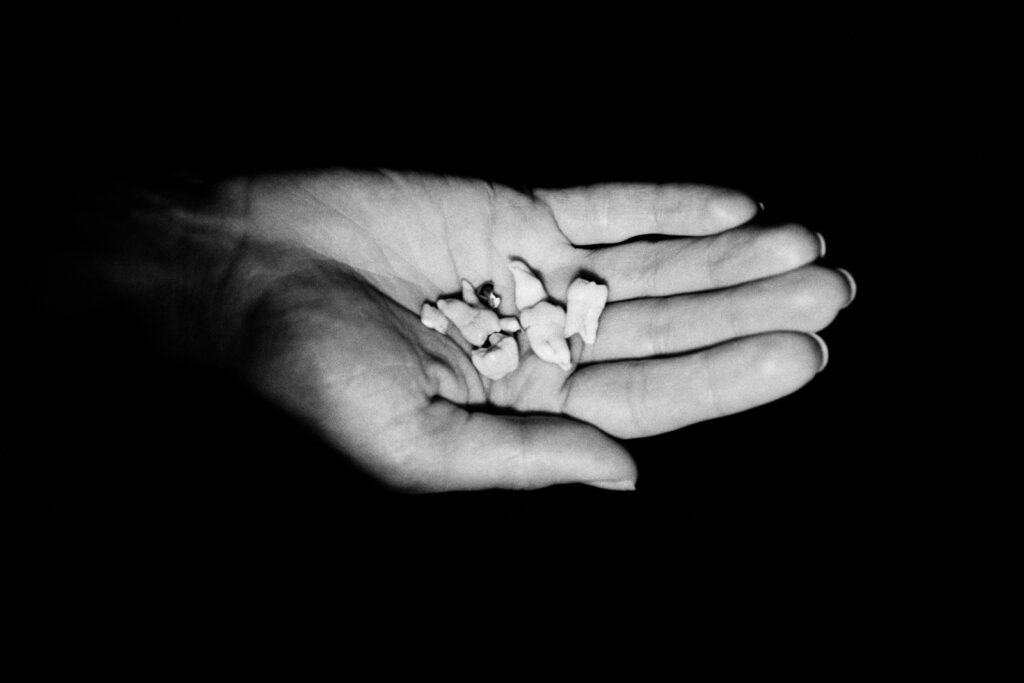
Ilja Niederkirchner
Der letzte Schnee [The Final Snow] (2022) is the intimate black and white story of a son witnessing his mother’s slow agony caused by cancer, then the consequences of this death on the memories he retains of this loved one. “When I think of my mother now, it is from the perspective of the end of her life, as if my memory of her began with her death,” writes Berlin-based photographer Ilja Niederkirchner. The project articulates portraits of the artist’s mother during her illness and recent photographs of the summer house where Niederkirchner spent part of his childhood, as well as other places related to his family history. Presented in the exhibition in a single line of images, the series forms a kind of timeline of the end of life of the artist’s mother, interrupted by flashbacks. While showing intense images of the disease, it is with a sense of discretion that Niederkirchner shares his experience of an anthropological universal, as dizzying as it is inevitable and natural, like that of the death of a parent.
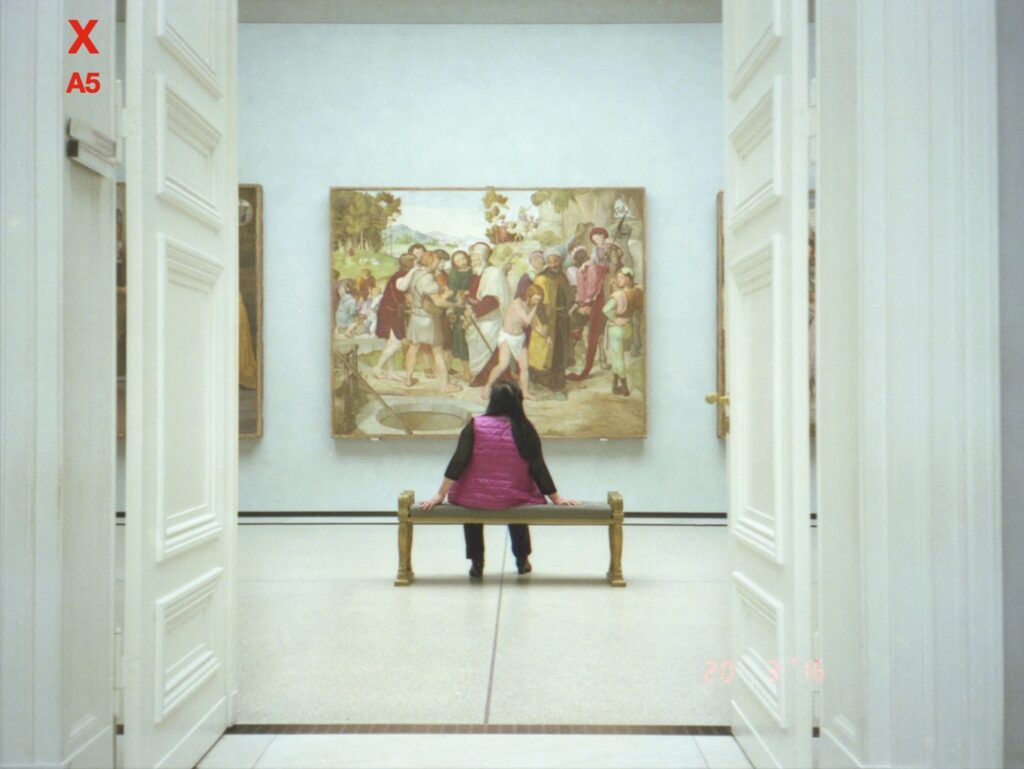
Fungi
With mẹ tôi [My mother] (2022), Fungi, a visual artist, performer and poet born in Hanoi (Vietnam) and now based in Germany, documents the resilience and new life of her mother, as much as she explores the possibility of restoring their mother-daughter relationship through photography. Due to significant changes in the German migrant labor law after the fall of the Wall, Fungi’s mother was never able to practice what she was trained for – precision optics – and spent most of her working life self-employed, consuming most of her time and energy, and neglecting her own health, femininity and interpersonal relationships. A « liberating divorce » and career change later, she is now rediscovering herself, enjoying newfound freedom and independence. Photography is the tool Fungi found to accompany her mother in this metamorphosis, and the easiest way for them to be together and to deal with – and heal – their relationship. Through tender portraits of her mom and her surroundings, Fungi offers her mother a platform to be seen and reveal herself.
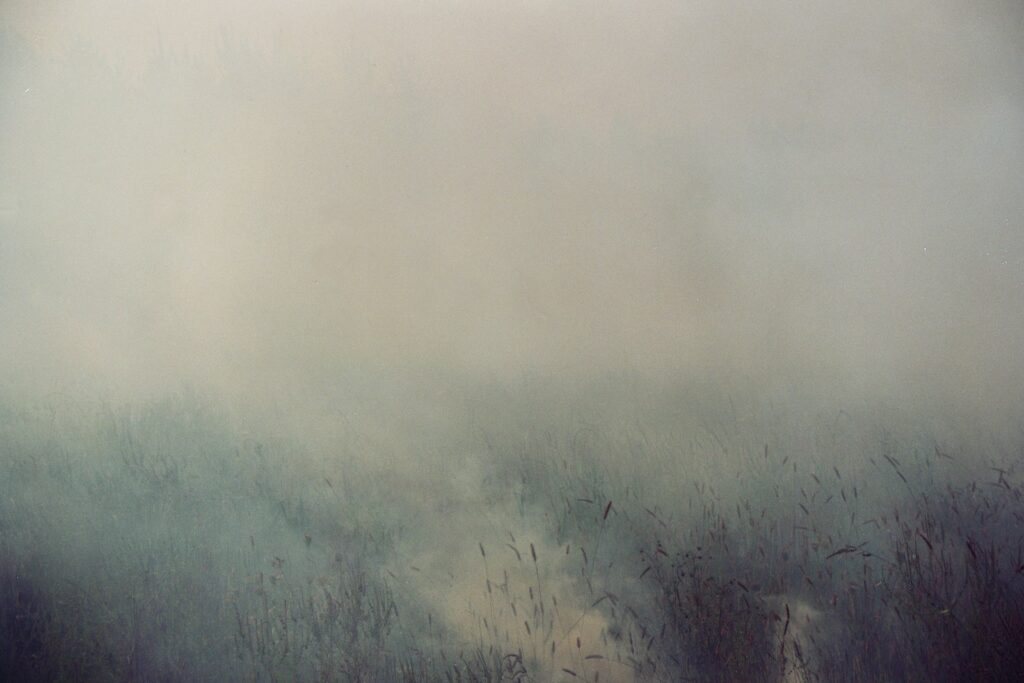
Mila Panic
“The perfect day would be around 20 °C. The earth and plants should be dry. No wind. At noon, when the morning dew is gone and the tractor is loaded with tools and water, we go to the field. […] As time passes the field changes color from golden to grayish black. Everything is burned within two hours.” This is how Bosnian-born artist, researcher and stand-up comedian Mila Panic describes field burning, a traditional practice in Bosnian agriculture, still used by her family and that she captured in Burned Field (2018). Burning crops and weeds on the fields after the autumn harvest would clear and fertilize the land for the next year, so goes the traditional belief. Panic sees in this ancestral and ritualized practice a metaphor of the future: unclear, obscured by smoke, but already taking its slow course and manifesting in flames.
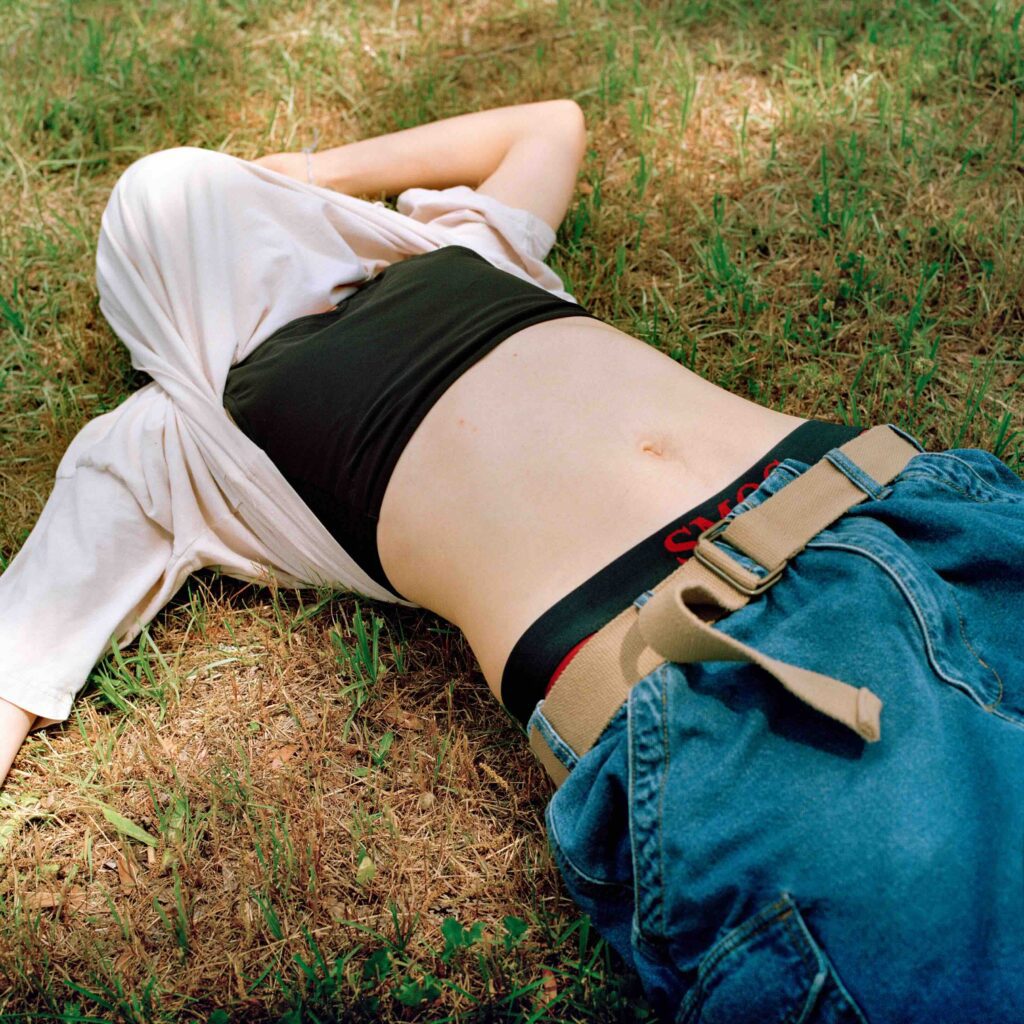
Theo Godmann
Becoming is a long-term autobiographical project that documents the transition from female to male of Theo Godmann, a young German photographer now living in Georgia (USA). The project is a way for the photographer to take a step back from his own experience, to identify his inner conflicts and their physical and societal influences. More than a diary, Becoming appears as a testimony that seeks to reveal the universal and simply human character of such an experience: the quest for one’s self and the long road to travel to reconcile body and mind, « to feel at home in [one’s] own skin, » says Godmann. Shot on medium format film, Godmann’s pictures bring to light the both intimate and public nature of gender transition. Certain snapshots that might otherwise seem innocuous here become bricks to self-construction.
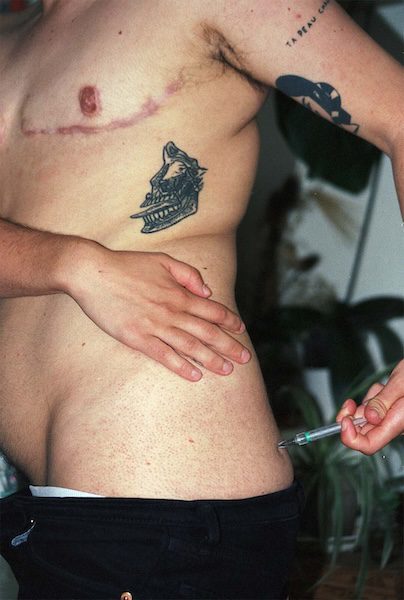
Nanténé Traoré
A French photographer and author based in Paris, Nanténé Traoré is driven by his thirst for a truer representation of the margins, a living documentation of the present, and a new iconography of the intimate. Started in 2021, Tu vas pas muter [You ain’t gonna mutate] documents the hormonal transition of trans people, many of whom are close to the photographer himself. Borrowing the words of Gabriel Gautier from his novel Speed, Traoré declares « I wanted to tell the story of my friends’ lives, because I thought we were heroes.” The main motif of the series is that of the injection. This medical gesture is here practiced collectively and becomes a moment of solidarity, sharing and tenderness. The strength of the series lies in particular in its representation of the collective. While following individual and intimate paths, Tu vas pas muter [You ain’t gonna mutate] is also part of a process of documenting the trans community and building its own archive from the inside. Traoré’s photographs are accompanied by texts written by those he photographs.
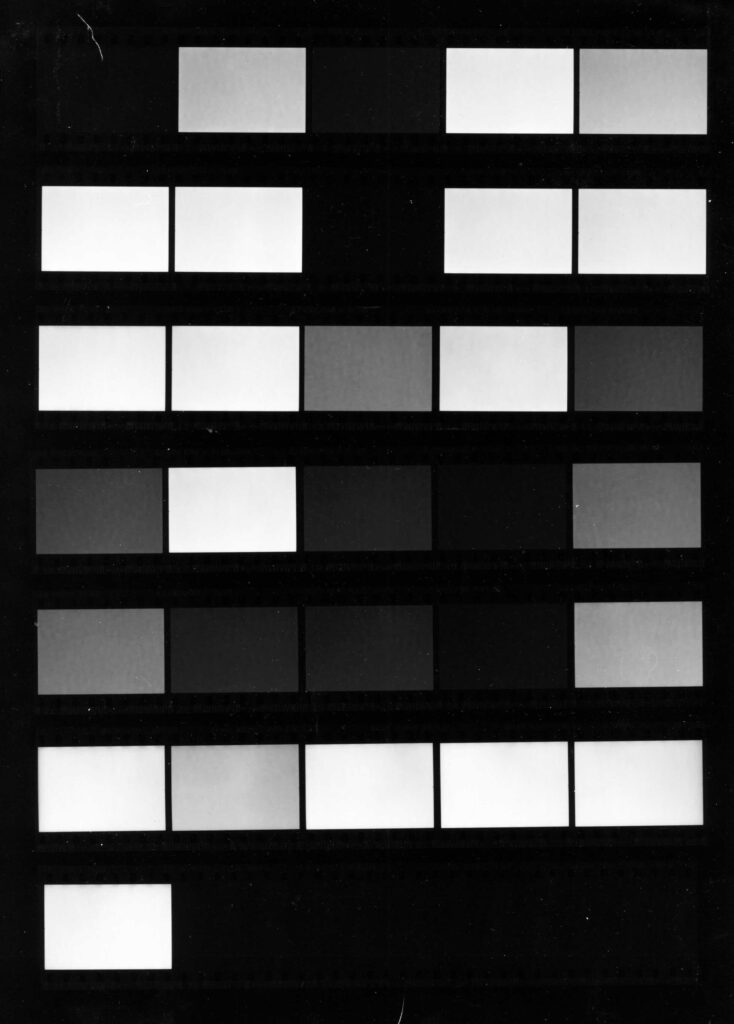
Kerstin Pfleger
The project Es wird nicht ohne hässliche Bilder gehen [It won’t work without ugly pictures] (2016), titled from a 2016 statement by Austria’s former Chancellor Sebastian Kurz, questions the difficult representation of the death of migrants in the news. Composed of 18 contact sheets, the series offers another way of accounting for the number of migrant deaths at Europe’s borders, over a period of 18 months, from July 2014 to December 2015. For each day, the Vienna-based photographer Kerstin Pfleger took a photo of the sky by adjusting the exposure speed according to the number of deaths that day: the more victims there were, the shorter the exposure time was, and consequently the darker the image is. By pushing the representation of a human tragedy to the maximum abstraction, Pfleger confronts us with the poor treatment of these current events, too often disembodied and treated as simple statistics, or on the contrary shown with voyeurism and sensationalist images to which we may get used to, to the point of indifference, as Susan Sontag already pointed out in Regarding the Pain of Others.
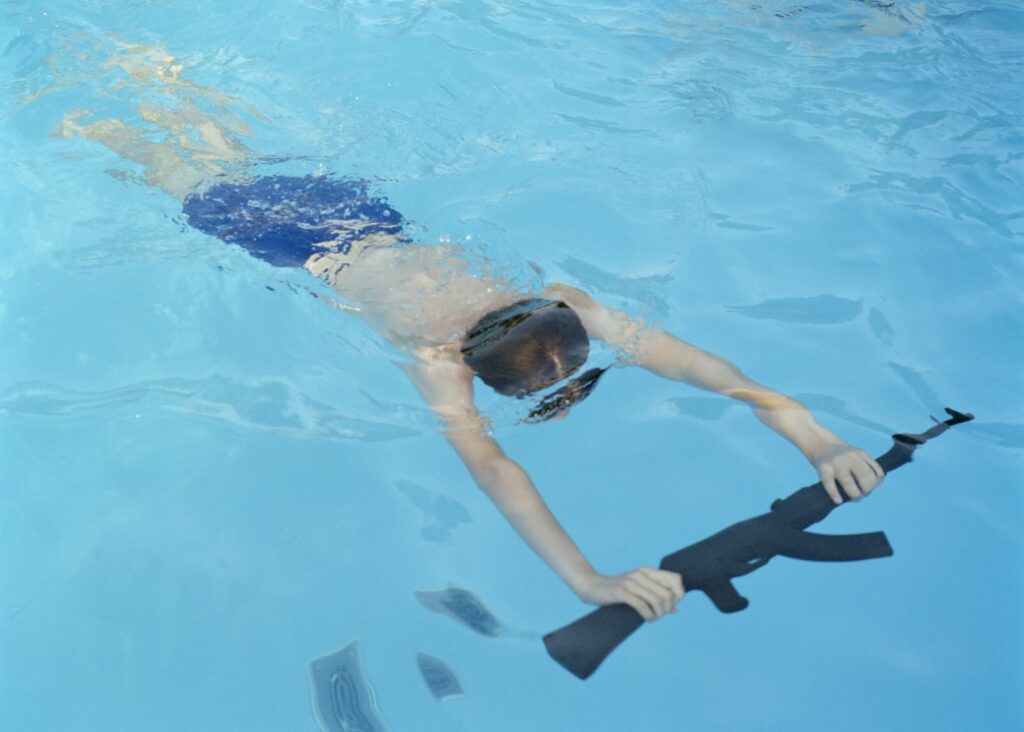
Natalia Kepesz
Niewybuch (2020) immerses us in Polish military camps for children and adolescents, a phenomenon that has experienced a strong resurgence in recent years, and documented by Polish photographer Natalia Kepesz, who lives and works in Berlin. Between fake blood, drill and the unreserved handling of weapons, children and young adults are taught military basics while being playfully indoctrinated in obedience and patriotism. Faced with these photographs, we are torn apart between the evocation of the games of children playing « at war » and the patent manifestation of a patriotic and nationalist indoctrination from the earliest age. The portraits captured by Natalia Kepesz show young adults with closed and expressionless faces, which adds to the discomfort of this fascinating and disturbing project. Niewybuch was awarded in « Portraits » category of the 2021 World Press Photo contest.

Lorenz Kienzle
It was while reading DIE ZEIT that photographer Lorenz Kienzle discovered the village of Horno and the fate that awaited it, and shortly after that he started this photographic project that would last nearly 20 years. In this long-term project carried out between 1992 and 2020, Lorenz Kienzle, now based in Berlin, documented the irrevocable replacement of a small village by an opencast lignite mine. Individual, family and collective stories surface in these black and white pictures where, although the imminent disappearance of the village weighs like a sword of Damocles, time seems suspended. First a work of documenting a topical event, Das Verschwinden von Horno [The Disappearance of Horno] is now part of a necessary enterprise of memory and preservation of a village that has now disappeared. In 2000, the Berlin journalist Helmut Höge described it as « certainly the most beautiful village of Lusatia. »